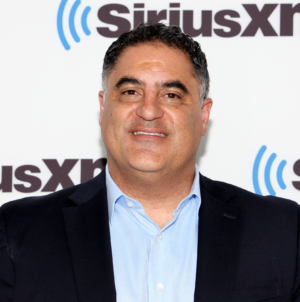-
Democratic Pundit Urges ‘Revolt’ Against Dem Leaders at Conservative Event - 25 mins ago
-
Human Beings Are Not Predators By Nature - 32 mins ago
-
Silver Slugger Award Winner Could Be Next First Baseman Moved: Report - about 1 hour ago
-
‘Christmas Adam’ Celebrations on Dec. 23 Spread in Some Parts of the U.S. - about 1 hour ago
-
Famous San Pedro fish market signs 49-year lease to stay in West Harbor - about 1 hour ago
-
Phillies Acquire Jesus Luzardo From NL East Rival Marlins: Reports - 2 hours ago
-
Removing Carbon From the Sky Could Be the Next Climate Gold Rush - 2 hours ago
-
California’s rush to regulate AI has a 1st Amendment problem - 2 hours ago
-
Face of Shelter Dog Spending His Fourth Christmas Alone Breaks Hearts - 2 hours ago
-
The Enigma of Bob Dylan - 3 hours ago
Strong Labor Market Steadied Social Security and Medicare Funds
The financial health of Social Security and Medicare, two of the nation’s most crucial safety net programs, improved this year as a stronger-than-expected economy attracted more workers to the labor market. But the overall financial outlook of the popular programs remained grim.
Annual reports released on Monday by trustees of the old-age and retirement programs showed that both still faced long-term shortfalls that could ultimately result in reduced retirement and medical benefits. The reports showed that the Social Security and disability insurance programs, if combined, would not have enough money to pay all of their obligations in 2035. Medicare will be unable to pay all its medical claims starting in 2036.
About 70 million people receive Social Security benefits, and more than 66 million participate in Medicare.
The fate of the popular programs continues to be a contentious political issue, one that is expected to intensify as the November presidential election draws near.
President Biden has pledged to block any cuts to Social Security and Medicare and has called for shoring up the programs with higher taxes on the rich. Former President Donald J. Trump, the presumptive Republican nominee, suggested this year that he was open to scaling back the programs when he said there was “a lot you can do in terms of entitlements in terms of cutting.” He later walked back those comments and pledged to protect the programs.
In a statement on Monday, Mr. Biden highlighted Republican proposals that would cut Social Security funding and raise the retirement age to qualify for benefits. He promised that he would be a bulwark against such policies.
“I will always fight for America’s seniors and prevent Republicans from cutting Social Security and Medicare,” Mr. Biden said.
Biden administration officials said the upgraded outlook for the programs was a sign that Mr. Biden’s economic agenda was working and insisted that they would resist any proposed cuts.
“Seniors spent a lifetime working to earn the benefits they receive, and the Biden-Harris administration will continue to oppose cuts to either program,” Treasury Secretary Janet L. Yellen said in a statement. “We are committed to steps that would protect and strengthen these programs that Americans rely on for a secure retirement.”
Martin O’Malley, the commissioner of Social Security, said that as long as Americans continued to work, the retirement program would be able to keep paying benefits, and he called on Congress to provide more money for the trust fund to ensure its long-term solvency.
“More people are contributing to Social Security, thanks to strong economic policies that have yielded impressive wage growth, historic job creation and a steady, low unemployment rate,” Mr. O’Malley said.
The reports said that the combined Social Security Old-Age and Survivors Insurance Trust Fund, which pays retiree benefits, and the Disability Insurance Trust Fund would be depleted in 2035, a year later than previously projected. At that point, 83 percent of the scheduled benefits would be available to be paid out.
The Old-Age and Survivors Insurance Trust Fund alone is projected to run short of money in 2033, the same year as previously forecast.
The Medicare Hospital Insurance Trust Fund, which covers hospital care for Medicare patients, will be unable to pay all its bills beginning in 2036, five years later than the trustees had estimated last year. The improving forecast of Medicare’s finances reflects the stronger-than-expected payroll taxes that help fund the program. It also benefits from some recent technical policy changes that will affect Medicare’s spending over the next decade.
Medicare’s spending has historically grown much faster than the economy, so shortfalls have been perpetually looming. But the difference between economic growth and growth in Medicare’s spending has narrowed in the last 15 years, a trend that has taken some pressure off the program’s finances.
But even with the improved forecast, the trustees warned that making the program financially healthy in the long term would mean either immediately raising Medicare taxes to 3.25 percent of wages from 2.9 percent or reducing Medicare’s hospital benefits by 8 percent, or adopting larger changes if they took longer to kick in.
The report also included a slightly improved forecast for Medicare’s spending on drugs and outpatient medical care in the next few decades, though those parts of Medicare are financed through general tax revenues, not dedicated sources of revenue.
Budget experts warned on Monday that despite a modest improvement in the finances of the programs, their long-term fiscal trajectory remained a concern.
“Too few politicians are willing to propose serious reforms and make the difficult choices needed to strengthen and save the program,” said Jason Fichtner, chief economist at the Bipartisan Policy Center. “Instead, leading voices on both sides of the aisle have buried their heads in the sand, proposing purely partisan policies or vowing not to touch the program.”
Preserving the programs without reducing benefits continues to be a challenge for lawmakers. However, the lobbying group representing retirees urged lawmakers to find a way to ensure that they remain solvent.
“For long-term sustainability, Congress owes it to the American people to reach a bipartisan solution, ensuring people’s hard-earned Social Security benefits will be there in full for the decades ahead,” said Jo Ann Jenkins, chief executive of AARP. “Older Americans make up the nation’s largest voting bloc and will hold leaders in Washington accountable if they fail to protect these programs.”



















